FOWLR tanks are easier to maintain than reef tanks. It is due to fewer objects, i.e., live rocks and fish. However, following a certain FOWLR tank maintenance routine is necessary. This article will address peculiarities, water parameters, the best filtration options, and their role in a FOWLR tank. Moreover, certain parameters to keep the FOWLR tank clean and filtration for a FOWLR tank are as follows. Scroll down and find many other interesting topics as well.
Content Table
FOWLR Tank Peculiarity
- They are simple tanks due to minimal objects, i.e., fish and live rocks, and less expensive to set up.
- Fowlr tanks require low maintenance as compared to reef tanks, and are suitable for beginners as they require low maintenance.
- They are suitable for aggressive fish species, e., puffer fish, triggerfish, etc., that can cause damage or eat corals and invertebrates.
- You can grow coralline algae on the rocks, as some fish species love to consume it as food.
- Never randomly use medicine in the tank, as it can cause damage to living beings on live rocks. Always research medicine and its effects before feeding it to your fish in a FOWLR tank.
- Mostly, FOWLR tanks are large, i.e., 55+ gallons, because they accommodate large fish species.
- FOWLR tanks are more tolerant of water parameters.
- Filtration is more robust in FOWLR tanks, as live rocks do it.
- They don’t require an intense lighting setup. A basic lighting setup is enough for a fish view.
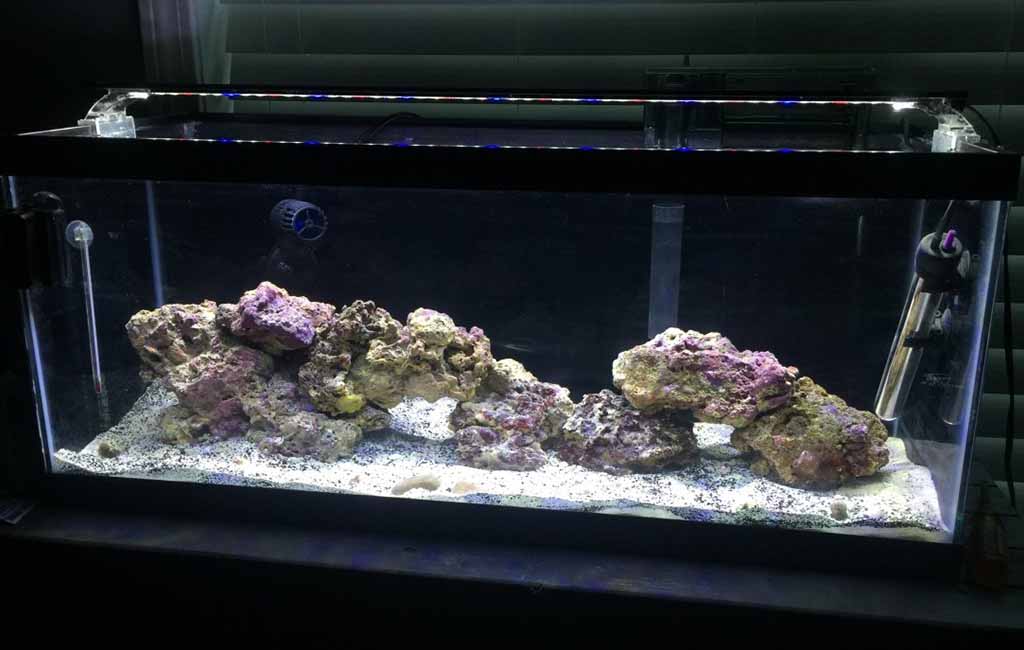
keep fowlr tank clean
Parameters to Check on FOWLR Tank
Although it is easy to keep a FOWLR tank, regular maintenance is necessary. You need to check the tank parameters regularly. Here is the parameter checking schedule.
Daily Water Parameter Testing
Buy a suitable water parameter testing kit and check the following parameters daily. Ensure that the water parameter value is in the optimal range. Moreover, the importance of each parameter is also present in the respective row.
| Parameter | Optimal Range | Why Maintain? |
| Temperature | 75–81°F | Optimize the growth of beneficial bacteria in the tank |
| Specific Gravity | 1.020–1.025 | Saltwater or marine fish heavily depend on the salinity. |
| pH | 7.8 – 8.2 | It affects the fish’s health, metabolism, breathing, and nitrifying bacteria in the tank, etc. |
| Ammonia (NH₃) | 0 ppm | Even a slight fragment can prove lethal for fish. |
| Nitrite (NO₂⁻) | 0 | Even a slight fragment can prove lethal for fish. Moreover, it indicates incomplete cycling. |
| Nitrate (NO₃⁻) | 10-40 ppm | Low levels can help prevent algae growth in the tank. |
How do You Regularly Check and Maintain the FOWLR Tank Cleaning?
| Task | How to Achieve It? |
| Visual inspection | Check the fish’s apparent behavior
Food leftover quantity Water cloudiness in the tank |
| Glass Cleaning | Use a glass scraper and clean the aquarium glass daily. |
| Uneaten food removal | Supply food to your fish and remove the leftover after 5 to 10 minutes. Use a turkey baster to remove the leftovers. |
| Maintain the water level | If your FOWLR tank has no lid, water will evaporate from it. Maintain a proper water level in the tank. Use RO or DI water to refill the tank to the desired level. |
Less Frequent Tasks
Although these tasks are less frequent. However, they are completely equivalent for optimal tank condition.
- Weekly, check the alkalinity.
- If you have invertebrates in your tank, check calcium and magnesium bi-weekly.
- Check the phosphate level monthly.
- At least, clean the skimmer weekly.
- Change up to 20% water after 2 weeks.
Best Filtration for a FOWLR Tank
Live rocks are a great help in biological filtration. However, FOWLR tanks are usually large. Therefore, proper filtration is required to maintain the water quality and fish health.
| Filtration Type | Purpose / Benefit | Tips |
| Mechanical Filtration | It includes filter socks, sponges, and floss. Traps debris, uneaten food, and particles | Clean or replace weekly |
| Biological Filtration | Usually, live rocks do the biological filtration. It hosts beneficial bacteria that convert ammonia into nitrite and then into nitrate | Use 1–1.5 lbs of live rock per gallon |
| Chemical Filtration | It includes activated carbon filters or GFO. Removes toxins, odors, discoloration, and excess nutrients | Replace monthly or twice a month. |
| Protein Skimmer | Removes organic waste before it decomposes | Choose one rated for 1.5–2x tank volume |
| Sump (Multi-Chamber) | It consists of a custom sump system. Houses all equipment, increases water volume, and enhances stability | Ideal setup for large or medium tanks |
| Auto Top-Off (ATO) | Maintains stable salinity by replacing evaporated freshwater | Reduces manual top-offs and salinity fluctuations |
Other than these filtration options, you can use other optional filtration systems. Here is a list of such systems.
| Refugium | Natural nutrient export and breeding ground | Add Chaetomorpha algae and proper lighting. |
| UV Sterilizer | Reduces free-floating algae, harmful bacteria, and parasites | Choose according to the flow rate and tank size. |
| Filter Roller | Auto-removes solid waste, reducing nitrate buildup | The best for ultra-low-maintenance setups |
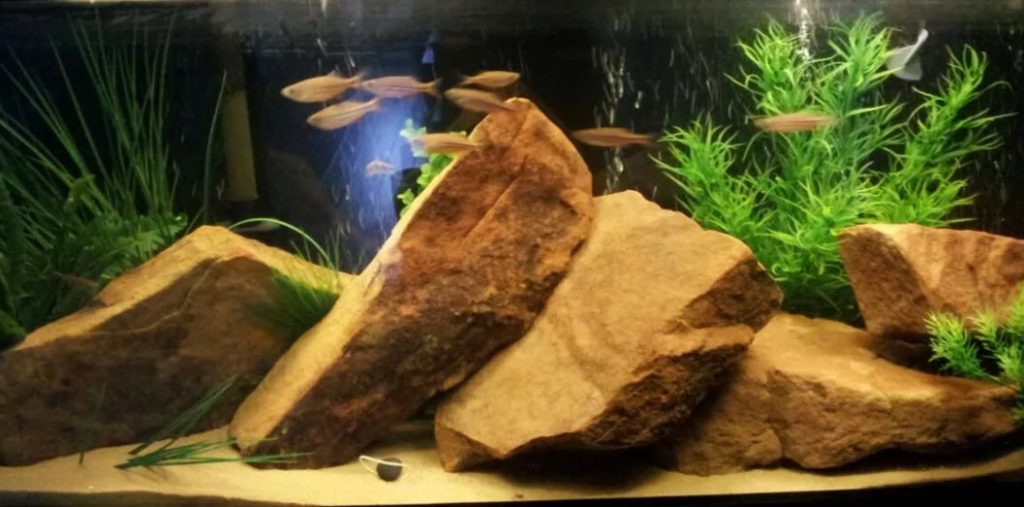
filtration for a fowlr tank
How to Keep a FOWLR Tank Clean?
FOWLR tank cleaning requires following an integrated cleaning approach. Here is how to keep your FOWLR tank clean.
Algae Growth Control
Controlling algae growth is critical, as it can overwhelm your tank and cause an ammonia spike. Here are some ways to control algae growth.
- Use an algae scraper for algae removal.
- Make a routine to clean the live rock gently with a soft brush.
- Use adjustable LED lights that only provide a view for 8 to 10 hours daily.
- Regularly check the phosphate and nitrate levels in the tank and try to keep them within limits.
- Use a protein skimmer as it helps to remove the dissolved organic matter before decomposition.
- Use activated carbon to remove the dissolved nutrients.
Live Rock Cleaning
- Gently rinse the live rock while changing the tank’s water to remove algae and detritus.
- Gently brush the rock surface. Use a soft brush to clean it.
- Always maintain good water circulation around the rocks. It’ll help to avoid algae and detritus on the rocks.
- Do a thorough weekly cleaning and inspection of the live rocks.
Nutrient Control
Often, nutrients can cause many problems in the tank. Ammonia spikes and algae blooms are common issues with many other problems. Therefore, nutrient control will help you to avoid these problems. Here are the ways to control nutrient levels in the tank.
- Do regular water parameter testing in the tank. Ammonia, nitrite, nitrate, and phosphate levels are critical. Keep them within certain limits.
- Do a 10 to 20% weekly or bi-weekly water change. The tank’s bioload decides the water change volume and frequency.
- Only feed that fish and other aquarium fellows consume within 2 minutes. Remove the leftover.
- Supplemental filtration will also help you to keep the nutrient level within limits.
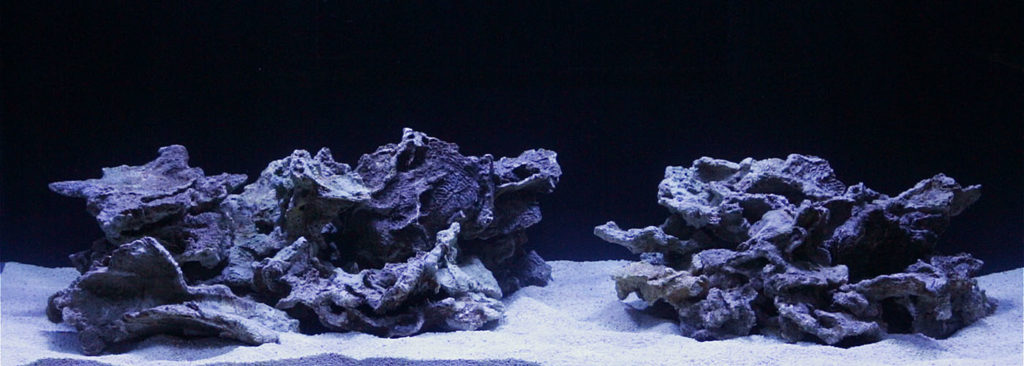
fowlr tank maintenance
FOWLR Tank Maintenance Schedule
A maintenance routine is also critical to keep your tank clean. It’ll help you avoid surprises and many other major issues that can arise in the future.
| Routine | Obligations |
| Daily | Check the water clarity, fish movement, and any sign of detritus and algae accumulation. |
| Remove algae, detritus, and food leftover traces with a turkey buster or siphon. | |
| Maintain optimal temperature. | |
| Ensure all equipment is functioning properly. | |
| Weekly | Check the water parameters. |
| Clean the filter media. | |
| Do a 10 to 20% water change according to your bioload. | |
| Check salinity with a hydrometer | |
| Monthly | Inspect and clean the equipment, e.g., pumps, protein skimmer, heater, etc. Ensure that everything is fully functioning and in optimal working condition. |
| Deep inspection and cleaning of the live rocks. |
Fish Care
| Frequency | Task |
| Before adding | Quarantine the fish for 2 to 4 weeks before introducing it to the main tank. It’ll help you to avoid accidental practice and other disease introductions in the tank. |
| Daily | Feed once or twice in a small proportion. |
| Parasite and other disease inspection. |
The Last Word
The FOWLR tank only hosts fish and live rocks. These saltwater tanks are easy to keep and maintain. An optimal filtration for the FOWLR tank is important. It requires maintenance in certain aspects, e.g., algae growth control, nutrient level control, and maintenance routine. Follow all the methods and suggestions to keep your FOWLR tank clean.
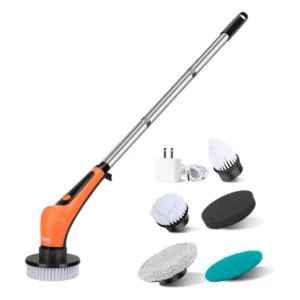
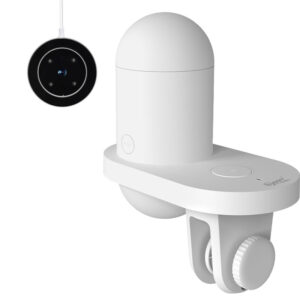
Leave a comment